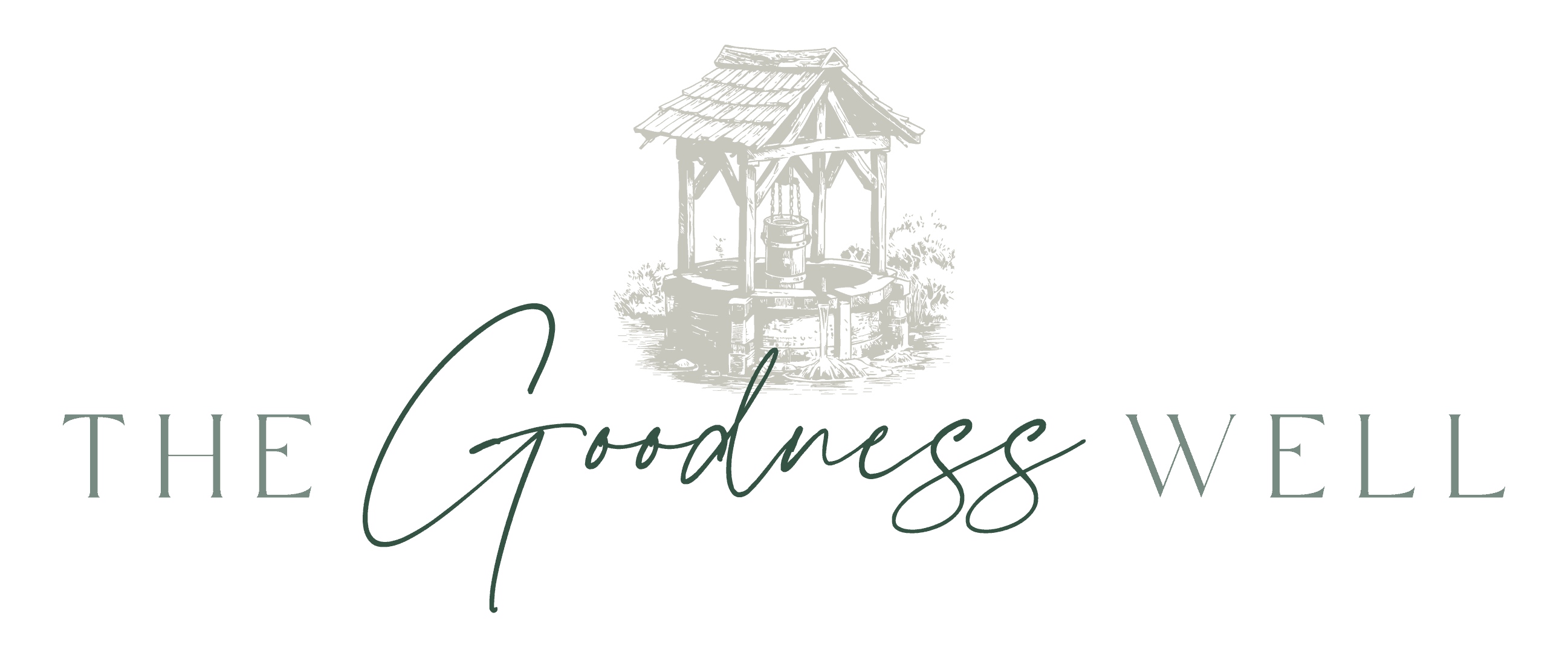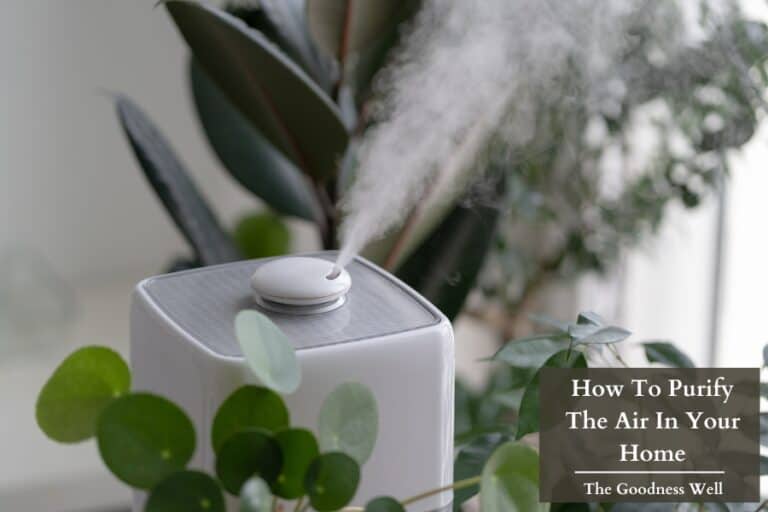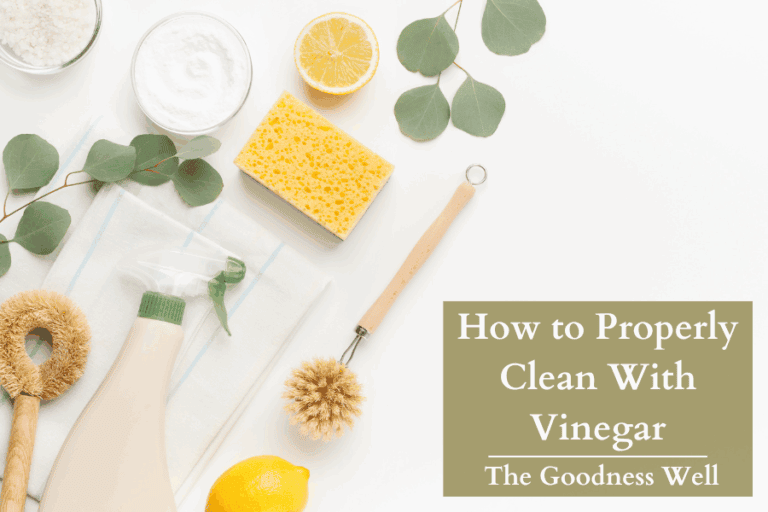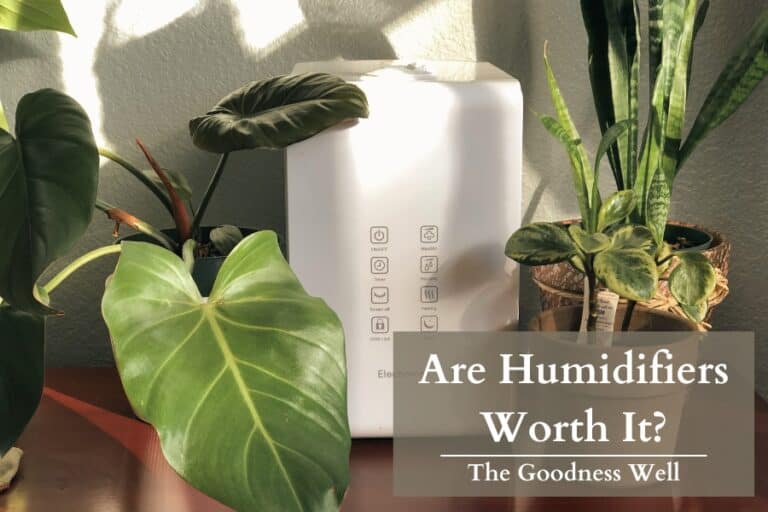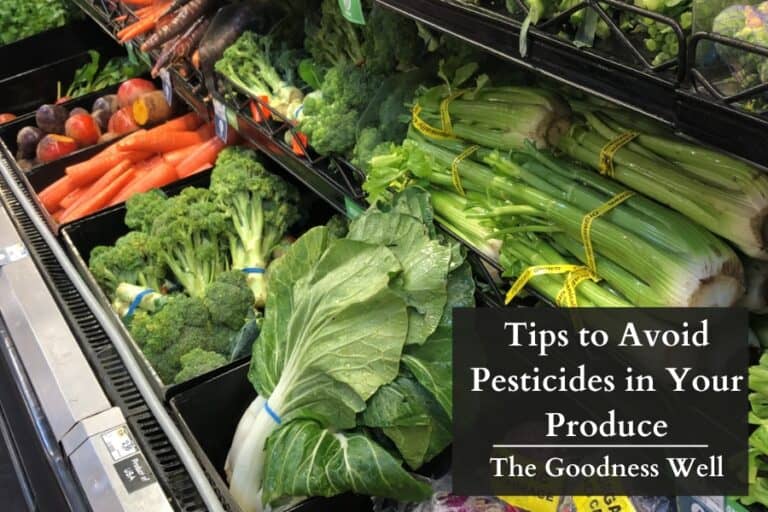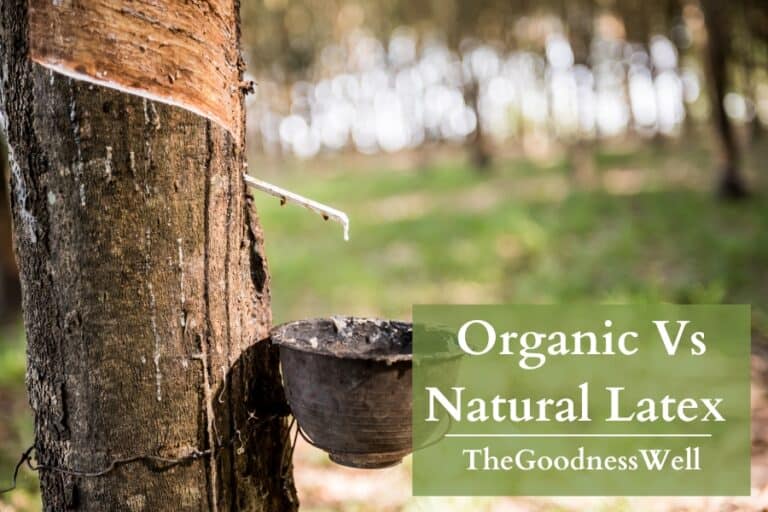Which Plastic is Safe for Food Storage?
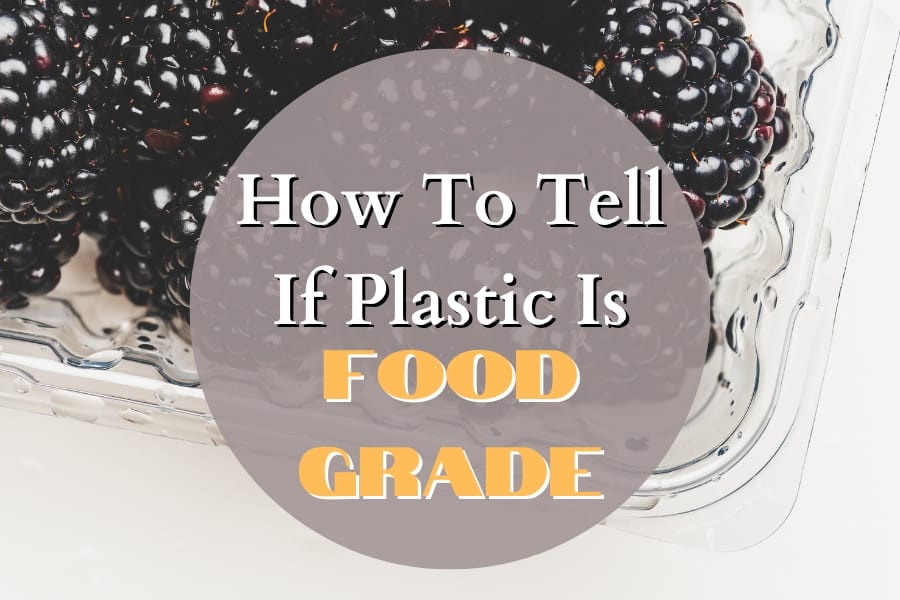
Plastic is everywhere in today’s world, but not all plastics are created equal, especially when it comes to storing our food.
With over 27 million tons of plastic ending up in landfills every year since 2018, understanding which plastics to use isn’t just about health, it’s important for the environment as well.
While we generally recommend more sustainable alternatives to plastic to plastic for both your health and the environment, we understand that plastic is the only practical option for a lot of people.
This guide will help you know which to pick
TL;DR
How can you identify food-grade plastic?
Look for the Resin Identification Code on the bottom of the containers. Plastics marked with numbers 2 (HDPE), 4 (LDPE), and 5 (PP) are considered the safest options for food and beverage storage.
What is Food Grade Plastic?
Food-grade plastic is specifically engineered to be safe for direct contact with food and beverages. These plastics:
- Don’t contain harmful dyes or chemicals that could leach into your food
- Are free from recycled materials that might introduce contaminants
- Can withstand the temperatures and chemical interactions associated with various foods and drinks
Types Of Plastics
- Polyethylene Terephthalate (PET or PETE):
- Symbol: ♳
- Common Uses: Beverage bottles, food containers.
- High-Density Polyethylene (HDPE):
- Symbol: ♴
- Common Uses: Milk jugs, shampoo bottles, detergent bottles.
- Polyvinyl Chloride (PVC):
- Symbol: ♵
- Common Uses: Pipes, cable insulation, toys, vinyl records, credit cards.
- Low-Density Polyethylene (LDPE):
- Symbol: ♶
- Common Uses: Plastic bags, cling wrap, squeeze bottles.
- Polypropylene (PP):
- Symbol: ♷
- Common Uses: Yogurt containers, bottle caps, straws, Tupperware.
- Polystyrene (PS):
- Symbol: ♸
- Common Uses: Styrofoam cups and plates, egg cartons, plastic cutlery.
- Other (various other plastics including those listed below and bioplastics):
- Symbol: ♹
- Common Types within “Other”:
- Polycarbonate (PC): Eyeglass lenses, CDs and DVDs.
- Polymethyl Methacrylate (PMMA): Also known as acrylic or plexiglass.
- Polyethylene Naphthalate (PEN): Electronics, high-performance containers.
- Polylactic Acid (PLA): Often used in biodegradable plastics.
Other Types of Plastic
- Acrylonitrile Butadiene Styrene (ABS):
- Common Uses: LEGO bricks, automotive parts, protective headgear.
- Nylon (Polyamide):
- Common Uses: Clothing, ropes, automotive components.
- Polybutadiene (PBR):
- Common Uses: Tires, golf balls.
- Polyurethane (PU):
- Common Uses: Foam mattresses, footwear, automotive interiors.
- Polytetrafluoroethylene (PTFE):
- Trade Name: Teflon
- Common Uses: Non-stick cookware, waterproof coatings.
Which Plastics Are Safe for Food Storage?
The Resin Identification Code can often determine the type of plastic, usually a number inside the chasing arrows recycling symbol on the bottom of the container.
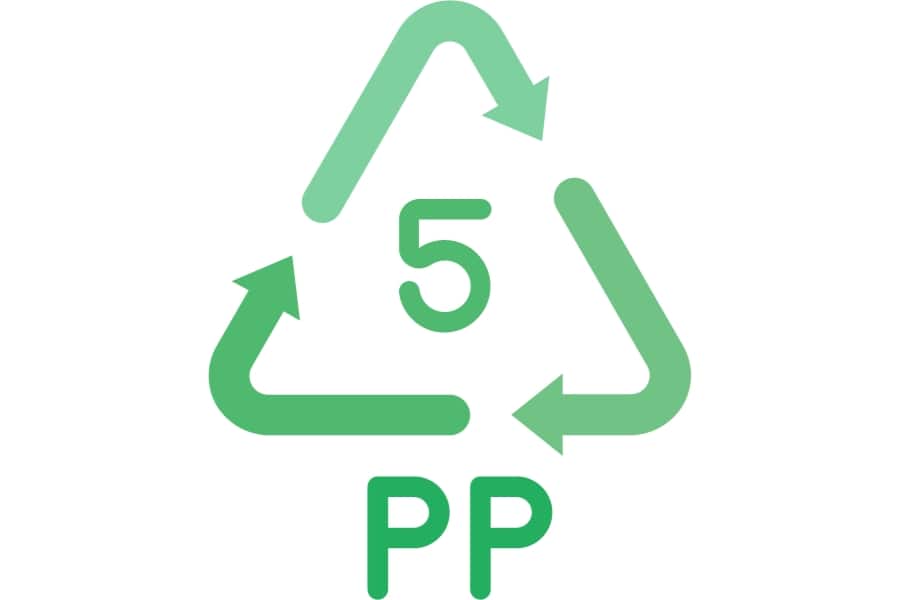
Common food-safe plastics include:
- HDPE (High-Density Polyethylene) ♴
- LDPE (Low-Density Polyethylene) ♶
- PP (Polypropylene) ♷
Check the bottom of a container for these plastic codes.
However, while these plastics are safer for food and beverage storage, it is crucial to handle them safely to prevent too much microplastics making it into your food.
Quick Tips for Safe Plastic Food Storage
- Choose the right plastics: Stick to #2 (HDPE), #4 (LDPE), and #5 (PP) for food storage.
- Avoid heating: Never microwave food in plastic containers, even if labeled “microwave-safe.”
- Hand wash only: Dishwasher heat and harsh detergents break plastic down even more.
- Replace regularly: Discard containers once they show signs of wear (scratches, cloudiness, warping).
- Watch temperature extremes: Don’t use plastic for very hot foods or store in freezers long-term. Plastic is fine to eat cold foods out of but use glass, stainless steel, or ceramic for hot foods.
- Use barriers: Place parchment paper between food and plastic, especially for acidic or oily foods.
- Reduce reuse of single-use items: Water bottles labeled #1 (PET) aren’t designed for repeated use.
- Transfer takeout: Move restaurant leftovers to glass or ceramic containers at home.
- Store dry when possible: Thoroughly dry containers before storing food to reduce chemical leaching.
- Consider alternatives: Gradually replace plastic with glass, stainless steel, or ceramic containers when possible.
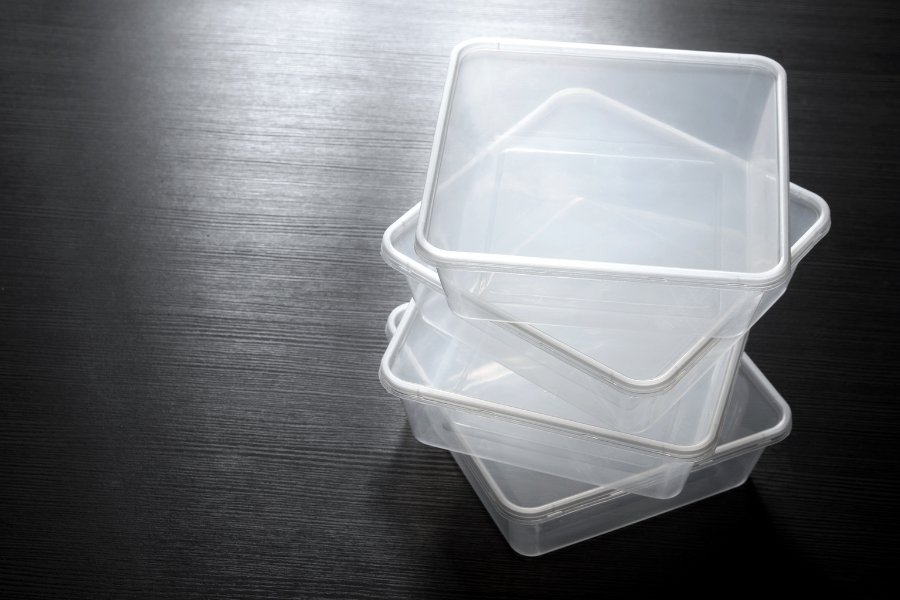
Is Food Grade Plastic BPA Free?
BPA (Bisphenol-A) is a known endocrine-disrupting chemical used in the making of certain plastics.
While many plastics are now made BPA-free, toxic BPA alternatives are being used in its place.
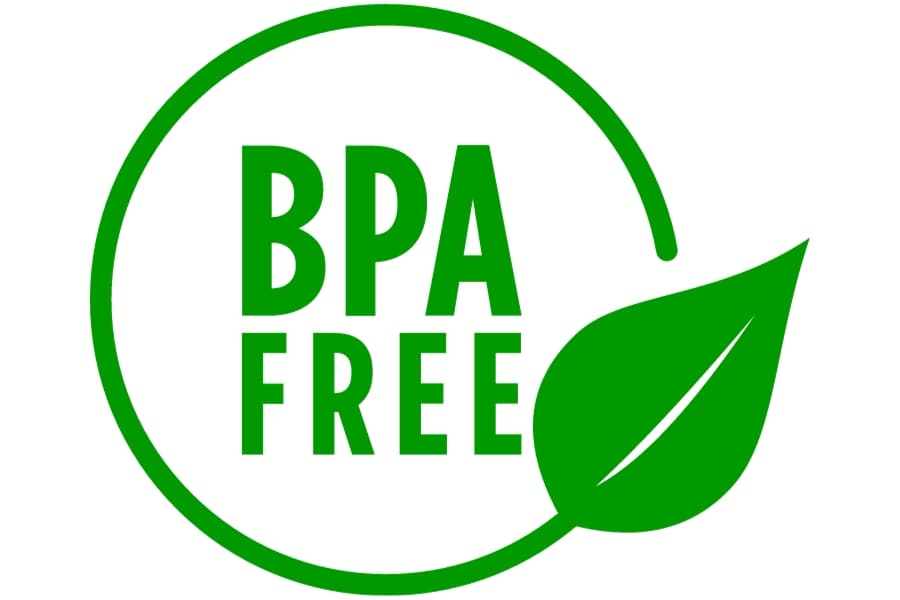
To avoid BPA as much as possible, avoid plastics labeled with the number 3 ♵ or number 7 ♹ symbol, as these are the most common to contain BPA or other similar bisphenols.
Luckily most lunch containers are made of polypropylene, which is known to be free of BPA.
Water Bottles & Beverages
For single-use water bottles, PET/PETE (♳) is commonly used and generally considered safe for one-time use.
However, these bottles aren’t designed for repeated use and break down more easily than other plastics over time.
For drinks, consider:
- Dedicated reusable water bottles made from food-grade plastics (preferably PP ♷)
- Glass water bottles with protective sleeves (this is the one I use)
- Stainless steel bottles
Food Grade Buckets & Lids
For bulk storage of dry goods, food-grade plastic buckets are a popular option, especially in restaurant settings and for home food storage. These typically:
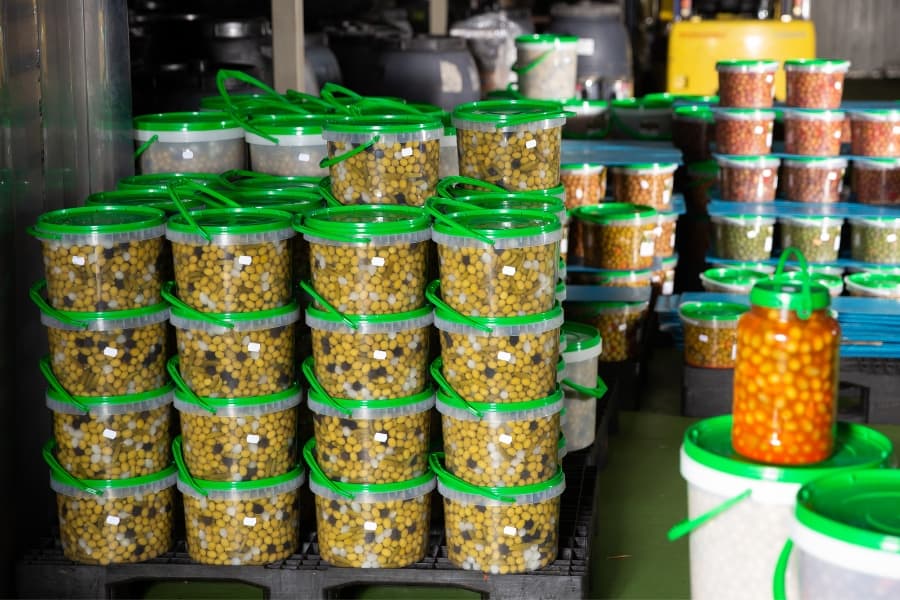
- Are made from HDPE (♴) or PP (♷)
- Feature airtight lids to maintain freshness
- May include specific “food-grade” labeling
- Are often white or translucent (colored buckets may contain dyes not intended for food contact)
In Conclusion
When it comes to food storage, your best options are:
- First choice: Glass, stainless steel, or ceramic containers
- Plastic alternatives: If using plastic, choose HDPE (♴), LDPE (♶), or PP (♷)
- Always avoid: PVC (♵), PS (♸), and most plastics labeled as “Other” (♹)
We understand that plastic-free alternatives aren’t always accessible or affordable for everyone.
However, by making smarter plastic choices, you can significantly reduce potential health risks while working toward more sustainable options when possible.
Your health and well-being deserve the best protection—starting with safe food storage practices!
